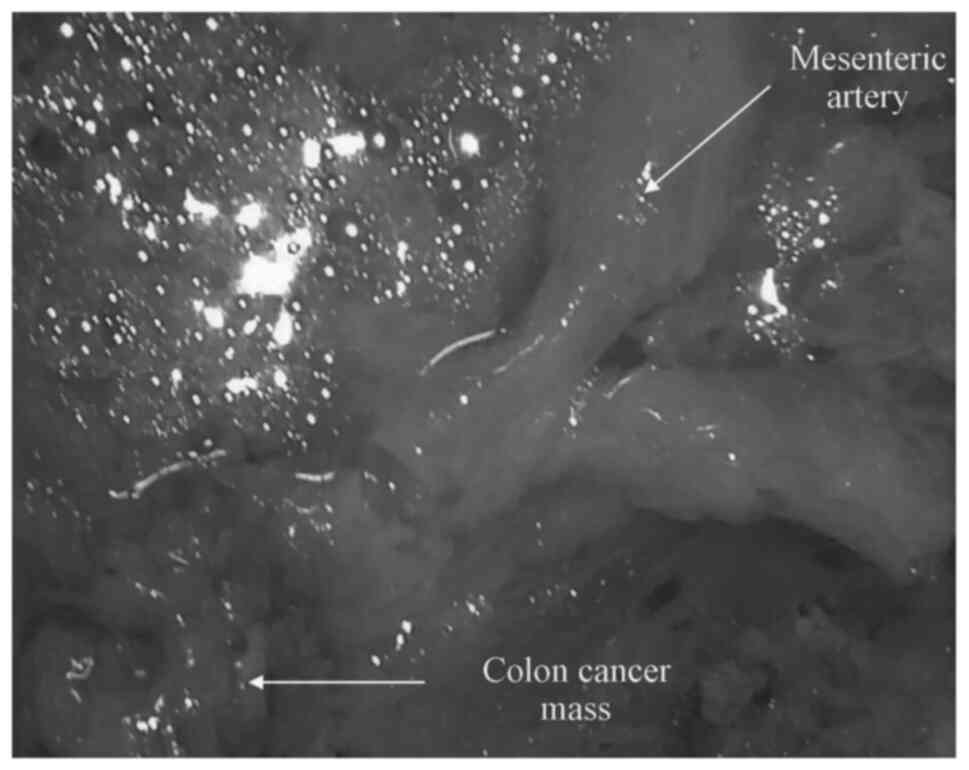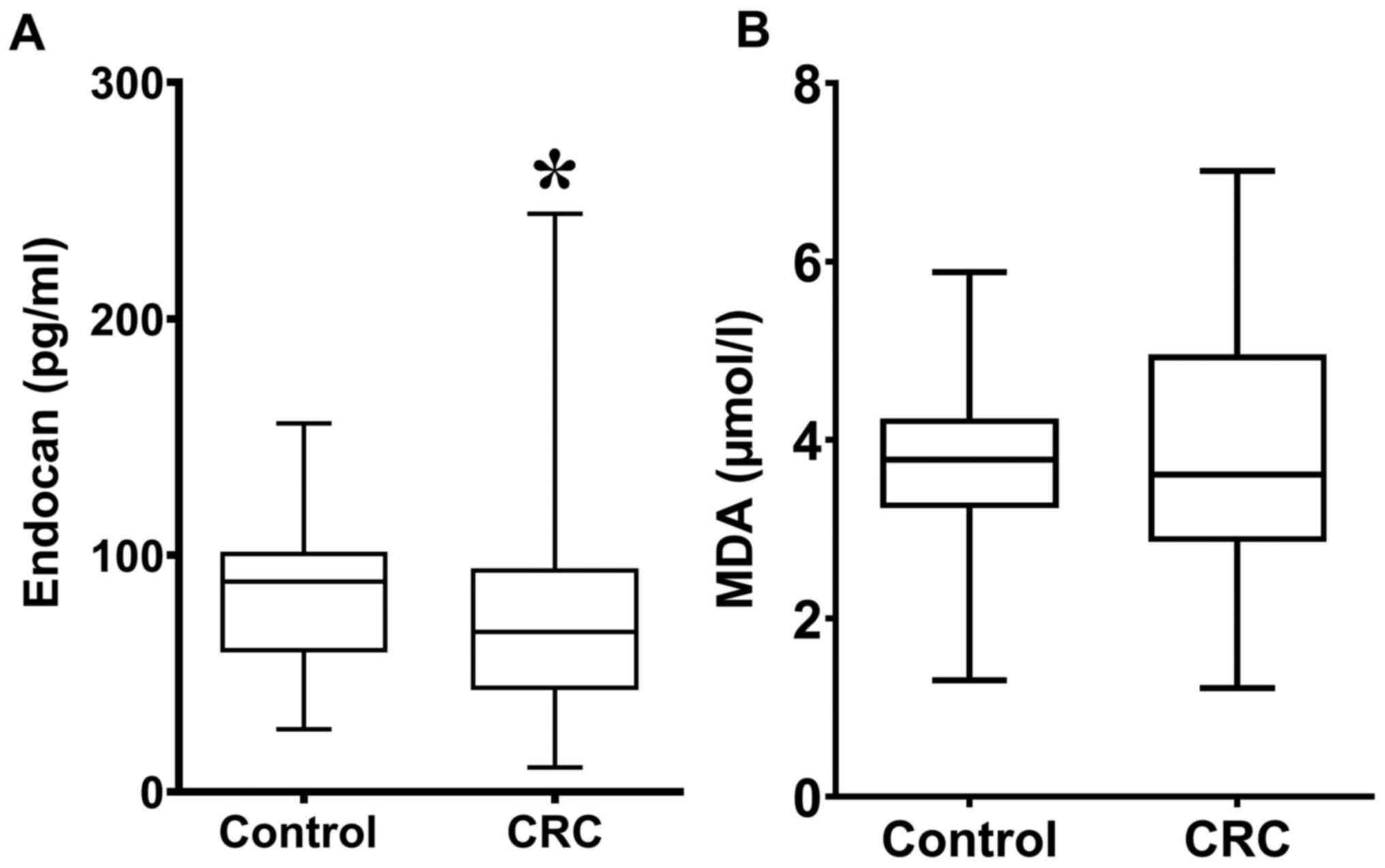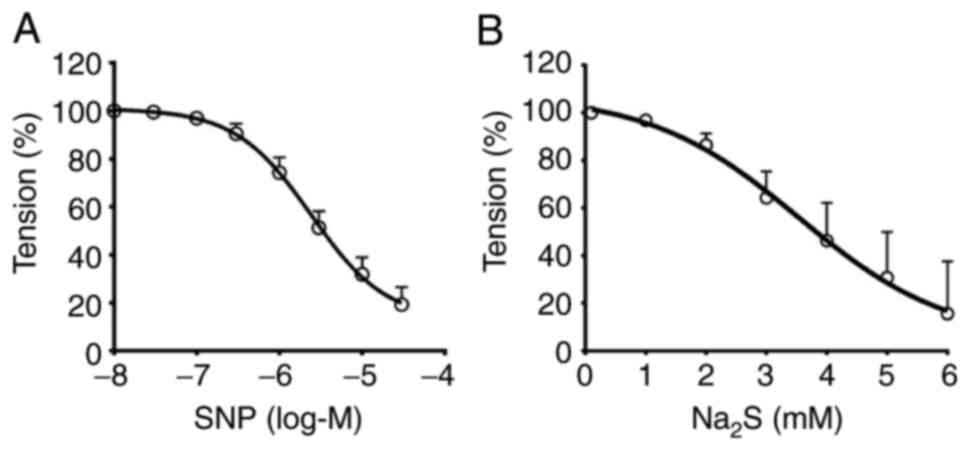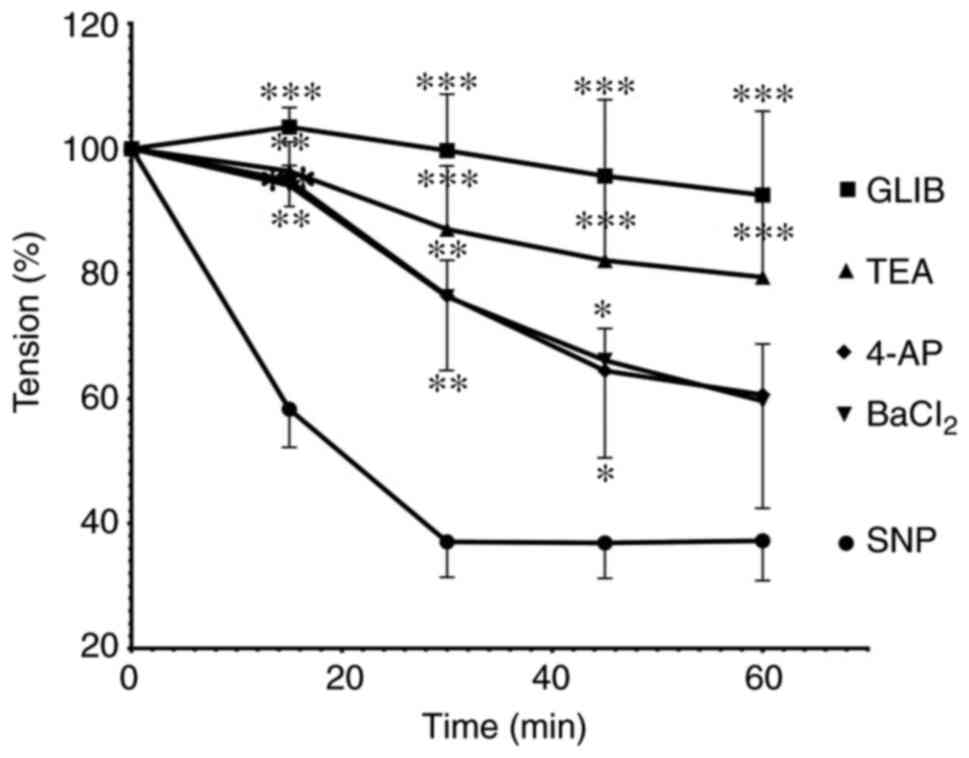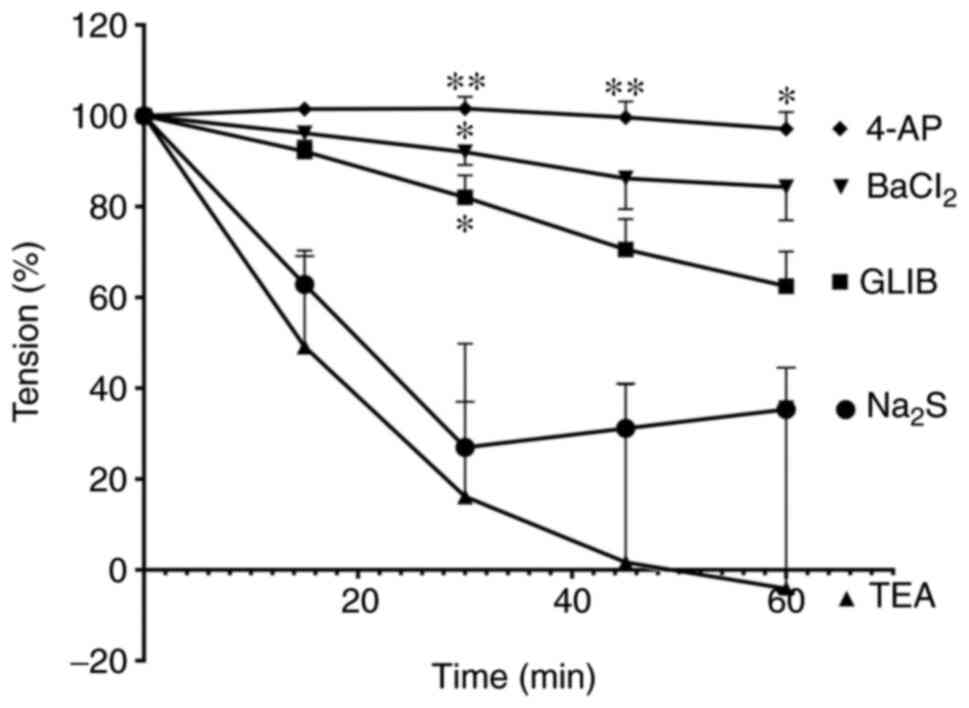|
1
|
Bray F, Ferlay J, Soerjomataram I, Siegel
RL, Torre LA and Jemal A: Global cancer statistics 2018: GLOBOCAN
estimates of incidence and mortality worldwide for 36 cancers in
185 countries. CA Cancer J Clin. 68:394–424. 2018.PubMed/NCBI View Article : Google Scholar
|
|
2
|
Arafa MA and Farhat KH: Recent diagnostic
procedures for colorectal cancer screening: Are they
cost-effective? Arab J Gastroenterol. 18:136–139. 2017.PubMed/NCBI View Article : Google Scholar
|
|
3
|
Alhurry AM, Rezaianzadeh A,
Rahimikazerooni S, Abd-Zaid Akool M, Bahrami F, Saeedeh Shahidinia
S and Pourahmad M: A review of the incidence of colorectal cancer
in the Middle East. Ann Colorectal Res. 5(e46292)2017.
|
|
4
|
Khoshnaw N, Mohammed HA and Abdullah DA:
Patterns of cancer in Kurdistan-results of eight years cancer
registration in sulaymaniyah Province-Kurdistan-Iraq. Asian Pac J
Cancer Prev. 16:8525–8531. 2016.PubMed/NCBI View Article : Google Scholar
|
|
5
|
Hamza H and Rasul K: The epidemiology of
colorectal cancer in Erbil. Cancer Sci Res. 4:1–7. 2018.
|
|
6
|
Wang R: Two's company, three's a crowd:
Can H2S be the third endogenous gaseous transmitter? FASEB J.
16:1792–1798. 2002.PubMed/NCBI View Article : Google Scholar
|
|
7
|
Yang G, Sener A, Ji Y, Pei Y and Pluth MD:
Gasotransmitters in biology and medicine: Molecular mechanisms and
drug targets. Oxid Med Cell Longev. 2016(4627308)2016.PubMed/NCBI View Article : Google Scholar
|
|
8
|
Moncada S, Palmer RM and Higgs EA:
Biosynthesis of nitric oxide from L-arginine. A pathway for the
regulation of cell function and communication. Biochem Pharmacol.
38:1709–1715. 1989.PubMed/NCBI View Article : Google Scholar
|
|
9
|
Palmer RM, Rees DD, Ashton DS and Moncada
S: L-arginine is the physiological precursor for the formation of
nitric oxide in endothelium-dependent relaxation. Biochem Biophys
Res Commun. 153:1251–1256. 1988.PubMed/NCBI View Article : Google Scholar
|
|
10
|
Kabil O and Banerjee R: Enzymology of H2S
biogenesis, decay and signaling. Antioxid Redox Signal. 20:770–782.
2014.PubMed/NCBI View Article : Google Scholar
|
|
11
|
Filipovic MR: Persulfidation
(S-sulfhydration) and H2S. Handb Exp Pharmacol. 230:29–59.
2015.PubMed/NCBI View Article : Google Scholar
|
|
12
|
Wang R, Cheng Y and Wu L: The role of
hydrogen sulfide as an endogenous vasorelaxant factor. In: Signal
transduction and the gasotransmitters. Wang R (ed). Humana Press,
pp323-332, 2004.
|
|
13
|
Nematollahi S, Nematbakhsh M,
Haghjooyjavanmard S, Khazaei M and Salehi M: Inducible nitric oxide
synthase modulates angiogenesis in ischemic hindlimb of rat. Biomed
Pap Med Fac Univ Palacky Olomouc Czech Repub. 153:125–129.
2009.PubMed/NCBI View Article : Google Scholar
|
|
14
|
Lüscher TF, Boulanger CM, Dohi Y and Yang
ZH: Endothelium-derived contracting factors. Hypertension.
19:117–130. 1992.PubMed/NCBI View Article : Google Scholar
|
|
15
|
Chadha PS, Liu L, Rikard-Bell M,
Senadheera S, Howitt L, Bertrand RL, Grayson TH, Murphy TV and
Sandow SL: Endothelium-dependent vasodilation in human mesenteric
artery is primarily mediated by myoendothelial gap junctions
intermediate conductance calcium-activated K+ channel and nitric
oxide. J Pharmacol Exp Ther. 336:701–708. 2011.PubMed/NCBI View Article : Google Scholar
|
|
16
|
Mustafa AK, Sikka G, Gazi SK, Steppan J,
Jung SM, Bhunia AK, Barodka VM, Gazi FK, Barrow RK, Wang R, et al:
Hydrogen sulfide as endothelium-derived hyperpolarizing factor
sulfhydrates potassium channels. Circ Res. 109:1259–1268.
2011.PubMed/NCBI View Article : Google Scholar
|
|
17
|
Szabó C and Papapetropoulos A: Hydrogen
sulphide and angiogenesis: Mechanisms and applications. Br J
Pharmacol. 164:853–865. 2011.PubMed/NCBI View Article : Google Scholar
|
|
18
|
Tang G, Wu L, Liang W and Wang R: Direct
stimulation of K(ATP) channels by exogenous and endogenous hydrogen
sulfide in vascular smooth muscle cells. Mol Pharmacol.
68:1757–1764. 2005.PubMed/NCBI View Article : Google Scholar
|
|
19
|
Coletta C, Papapetropoulos A, Erdelyi K,
Olah G, Módis K, Panopoulos P, Asimakopoulou A, Gerö D, Sharina I,
Martin E and Szabo C: Hydrogen sulfide and nitric oxide are
mutually dependent in the regulation of angiogenesis and
endothelium-dependent vasorelaxation. Proc Natl Acad Sci USA.
109:9161–9166. 2012.PubMed/NCBI View Article : Google Scholar
|
|
20
|
Mistry RK and Brewer AC: Redox regulation
of gasotransmission in the vascular system: A focus on
angiogenesis. Free Radic Biol Med. 108:500–516. 2017.PubMed/NCBI View Article : Google Scholar
|
|
21
|
Hu Q, Wu D, Ma F, Yang S, Tan B, Xin H, Gu
X, Chen X, Chen S, Mao Y and Zhu YZ: Novel angiogenic activity and
molecular mechanisms of ZYZ-803, a slow-releasing hydrogen
sulfide-nitric oxide hybrid molecule. Antioxid Redox Signal.
25:498–514. 2016.PubMed/NCBI View Article : Google Scholar
|
|
22
|
Kashfi K: The dichotomous role of
H2S in cancer cell biology? Deja vu all over again.
Biochem Pharmacol. 149:205–223. 2018.PubMed/NCBI View Article : Google Scholar
|
|
23
|
Szabo C: Gasotransmitters in cancer: From
pathophysiology to experimental therapy. Nat Rev Drug Discov.
15:185–203. 2016.PubMed/NCBI View Article : Google Scholar
|
|
24
|
Oláh G, Módis K, Törö G, Hellmich MR,
Szczesny B and Szabo C: Role of endogenous and exogenous nitric
oxide, carbon monoxide and hydrogen sulfide in HCT116 colon cancer
cell proliferation. Biochem Pharmacol. 149:186–204. 2017.PubMed/NCBI View Article : Google Scholar
|
|
25
|
Kather JN, Zöllner FG, Schad LR, Melchers
SM, Sinn HP, Marx A, Gaiser T and Weis CA: Identification of a
characteristic vascular belt zone in human colorectal cancer. PLoS
One. 12(e0171378)2017.PubMed/NCBI View Article : Google Scholar
|
|
26
|
Sonveaux P: Provascular strategy:
Targeting functional adaptations of mature blood vessels in tumors
to selectively influence the tumor vascular reactivity and improve
cancer treatment. Radiother Oncol. 86:300–313. 2008.PubMed/NCBI View Article : Google Scholar
|
|
27
|
Sosa V, Moline T, Somoza R, Paciucci R,
Kondoh H and ME LL: Oxidative stress and cancer: An overview.
Ageing Res Rev. 12:376–390. 2013.PubMed/NCBI View Article : Google Scholar
|
|
28
|
Gill JG, Piskounova E and Morrison SJ:
Cancer, oxidative stress, and metastasis. Cold Spring Harb Symp
Quant Biol. 81:163–175. 2016.PubMed/NCBI View Article : Google Scholar
|
|
29
|
Reuter S, Gupta SC, Chaturvedi MM and
Aggarwal BB: Oxidative stress, inflammation, and cancer: How are
they linked? Free Radic Biol Med. 49:1603–1616. 2010.PubMed/NCBI View Article : Google Scholar
|
|
30
|
Perše M: Oxidative stress in the
pathogenesis of colorectal cancer: Cause or consequence? Biomed Res
Int. 2013(725710)2013.PubMed/NCBI View Article : Google Scholar
|
|
31
|
Perillo B, Di Donato M, Pezone A, Di Zazzo
E, Giovannelli P, Galasso G, Castoria G and Migliaccio A: ROS in
cancer therapy: The bright side of the moon. Exp Mol Med.
52:192–203. 2020.PubMed/NCBI View Article : Google Scholar
|
|
32
|
Hsu T, Nguyen-Tran HH and Trojanowska M:
Active roles of dysfunctional vascular endothelium in fibrosis and
cancer. J Biomed Sci. 26(86)2019.PubMed/NCBI View Article : Google Scholar
|
|
33
|
Orbegozo D, Rahmania L, Irazabal M,
Mendoza M, Annoni F, De Backer D, Creteur J and Vincent JL: Endocan
as an early biomarker of severity in patients with acute
respiratory distress syndrome. Ann Intensive Care.
7(93)2017.PubMed/NCBI View Article : Google Scholar
|
|
34
|
Ohkawa H, Ohishi N and Yagi K: Assay for
lipid peroxides in animal tissues by thiobarbituric acid reaction.
Anal Biochem. 95:351–358. 1979.PubMed/NCBI View Article : Google Scholar
|
|
35
|
Furchgott RF and Zawadzki JV: The
obligatory role of endothelial cells in the relaxation of arterial
smooth muscle by acetylcholine. Nature. 288:373–376.
1980.PubMed/NCBI View Article : Google Scholar
|
|
36
|
Zuo L, Zhang SM, Hu RL, Zhu HQ, Zhou Q,
Gui SY, Wu Q and Wang Y: Correlation between expression and
differentiation of endocan in colorectal cancer. World J
Gastroenterol. 14:4562–4568. 2008.PubMed/NCBI View Article : Google Scholar
|
|
37
|
Hatfield KJ, Lassalle P, Leiva RA, Lindås
R, Wendelboe Ø and Bruserud Ø: Serum levels of endothelium-derived
endocan are increased in patients with untreated acute myeloid
leukemia. Hematology. 16:351–356. 2011.PubMed/NCBI View Article : Google Scholar
|
|
38
|
Yang J, Yang Q, Yu S and Zhang X: Endocan:
A new marker for cancer and a target for cancer therapy. Biomed
Rep. 3:279–283. 2015.PubMed/NCBI View Article : Google Scholar
|
|
39
|
Delehedde M, Devenyns L, Maurage CA and
Vives RR: Endocan in cancers: A lesson from a circulating dermatan
sulfate proteoglycan. Int J Cell Biol. 2013(705027)2013.PubMed/NCBI View Article : Google Scholar
|
|
40
|
Pardo LA and Stuhmer W: The roles of K(+)
channels in cancer. Nat Rev Cancer. 14:39–48. 2014.PubMed/NCBI View Article : Google Scholar
|
|
41
|
Gönenç A, Erten D, Aslan S, Akinci M,
Simşek B and Torun M: Lipid peroxidation and antioxidant status in
blood and tissue of malignant breast tumor and benign breast
disease. Cell Biol Int. 30:376–380. 2006.PubMed/NCBI View Article : Google Scholar
|
|
42
|
Skrzydlewska E, Sulkowski S, Koda M,
Zalewski B, Kanczuga-Koda L and Sulkowska M: Lipid peroxidation and
antioxidant status in colorectal cancer. World J Gastroenterol.
11:403–406. 2005.PubMed/NCBI View Article : Google Scholar
|
|
43
|
Subramanyam D, Subbaiah KV, Rajendra W and
Lokanatha V: Serum selenium concentration and antioxidant activity
in cervical cancer patients before and after treatment. Exp Oncol.
35:97–100. 2013.PubMed/NCBI
|
|
44
|
Plane F, Sampson LJ, Smith JJ and Garland
CJ: Relaxation to authentic nitric oxide and SIN-1 in rat isolated
mesenteric arteries: Variable role for smooth muscle
hyperpolarization. Br J Pharmacol. 133:665–672. 2001.PubMed/NCBI View Article : Google Scholar
|
|
45
|
Chalon S, Tejura B, Moreno H, Urae A,
Blaschke TF and Hoffman BB: Role of nitric oxide in isoprenaline
and sodium nitroprusside-induced relaxation in human hand veins. Br
J Clin Pharmacol. 47:91–98. 1999.PubMed/NCBI View Article : Google Scholar
|
|
46
|
Brayden JE: Functional roles of
KATP channels in vascular smooth muscle. Clin Exp
Pharmacol Physiol. 29:312–316. 2002.PubMed/NCBI View Article : Google Scholar
|
|
47
|
Félétou M: Calcium-activated potassium
channels and endothelial dysfunction: Therapeutic options? Br J
Pharmacol. 156:545–562. 2009.PubMed/NCBI View Article : Google Scholar
|
|
48
|
Ko EA, Han J, Jung ID and Park WS:
Physiological roles of K+ channels in vascular smooth muscle cells.
J Smooth Muscle Res. 44:65–81. 2008.PubMed/NCBI View Article : Google Scholar
|
|
49
|
Stankevicius E, Dalsgaard T, Kroigaard C,
Beck L, Boedtkjer E, Misfeldt MW, Nielsen G, Schjorring O, Hughes A
and Simonsen U: Opening of small and intermediate calcium-activated
potassium channels induces relaxation mainly mediated by
nitric-oxide release in large arteries and endothelium-derived
hyperpolarizing factor in small arteries from rat. J Pharmacol Exp
Ther. 339:842–850. 2011.PubMed/NCBI View Article : Google Scholar
|
|
50
|
Jiang J, Thoren P, Caligiuri G, Hansson GK
and Pernow J: Enhanced phenylephrine-induced rhythmic activity in
the atherosclerotic mouse aorta via an increase in opening of
KCa channels: Relation to Kv channels and nitric oxide.
Br J Pharmacol. 128:637–646. 1999.PubMed/NCBI View Article : Google Scholar
|
|
51
|
Schubert R, Krien U, Wulfsen I, Schiemann
D, Lehmann G, Ulfig N, Veh RW, Schwarz JR and Gago H: Nitric oxide
donor sodium nitroprusside dilates rat small arteries by activation
of inward rectifier potassium channels. Hypertension. 43:891–896.
2004.PubMed/NCBI View Article : Google Scholar
|
|
52
|
Hempelmann RG, Seebeck J, Kruse ML,
Ziegler A and Mehdorn HM: Role of potassium channels in the
relaxation induced by the nitric oxide (NO) donor DEA/NO in the
isolated rat basilar artery. Neurosci Lett. 313:21–24.
2001.PubMed/NCBI View Article : Google Scholar
|
|
53
|
Materazzi S, Zagli G, Nassini R, Bartolini
I, Romagnoli S, Chelazzi C, Benemei S, Coratti A, De Gaudio AR and
Patacchini R: Vasodilator activity of hydrogen sulfide (H2S) in
human mesenteric arteries. Microvasc Res. 109:38–44.
2017.PubMed/NCBI View Article : Google Scholar
|
|
54
|
Zhao W, Zhang J, Lu Y and Wang R: The
vasorelaxant effect of H(2)S as a novel endogenous gaseous K(ATP)
channel opener. EMBO J. 20:6008–6016. 2001.PubMed/NCBI View Article : Google Scholar
|
|
55
|
Webb GD, Lim LH, Oh VM, Yeo SB, Cheong YP,
Ali MY, El Oakley R, Lee CN, Wong PS, Caleb MG, et al: Contractile
and vasorelaxant effects of hydrogen sulfide and its biosynthesis
in the human internal mammary artery. J Pharmacol Exp Ther.
324:876–882. 2008.PubMed/NCBI View Article : Google Scholar
|
|
56
|
Zhao W and Wang R: H(2)S-induced
vasorelaxation and underlying cellular and molecular mechanisms. Am
J Physiol Heart Circ Physiol. 283:H474–H480. 2002.PubMed/NCBI View Article : Google Scholar
|
|
57
|
Köhn C, Schleifenbaum J, Szijártó IA,
Markó L, Dubrovska G, Huang Y and Gollasch M: Differential effects
of cystathionine-γ-lyase-dependent vasodilatory H2S in
periadventitial vasoregulation of rat and mouse aortas. PLoS One.
7(e41951)2012.PubMed/NCBI View Article : Google Scholar
|
|
58
|
Teague B, Asiedu S and Moore PK: The
smooth muscle relaxant effect of hydrogen sulphide in vitro:
Evidence for a physiological role to control intestinal
contractility. Br J Pharmacol. 137:139–145. 2002.PubMed/NCBI View Article : Google Scholar
|
|
59
|
Al-Magableh MR and Hart JL: Mechanism of
vasorelaxation and role of endogenous hydrogen sulfide production
in mouse aorta. Naunyn Schmiedebergs Arch Pharmacol. 383:403–413.
2011.PubMed/NCBI View Article : Google Scholar
|
|
60
|
Doughty JM, Boyle JP and Langton PD:
Blockade of chloride channels reveals relaxations of rat small
mesenteric arteries to raised potassium. Br J Pharmacol.
132:293–301. 2001.PubMed/NCBI View Article : Google Scholar
|
|
61
|
Salihi A: Activation of inward rectifier
potassium channels in high salt impairment of hydrogen
sulfide-induced aortic relaxation in rats. Physiol Pharmacol.
19:263–273. 2016.
|
|
62
|
Jackson-Weaver O, Osmond JM, Riddle MA,
Naik JS, Gonzalez Bosc LV, Walker BR and Kanagy NL: Hydrogen
sulfide dilates rat mesenteric arteries by activating endothelial
large-conductance Ca2+-activated K+ channels
and smooth muscle Ca2+ sparks. Am J Physiol Heart Circ
Physiol. 304:H1446–H1454. 2013.PubMed/NCBI View Article : Google Scholar
|
|
63
|
Liang GH, Xi Q, Leffler CW and Jaggar JH:
Hydrogen sulfide activates Ca2+ sparks to induce
cerebral arteriole dilatation. J Physiol. 590:2709–2720.
2012.PubMed/NCBI View Article : Google Scholar
|
|
64
|
Tang G, Wu L and Wang R: Interaction of
hydrogen sulfide with ion channels. Clin Exp Pharmacol Physiol.
37:753–763. 2010.PubMed/NCBI View Article : Google Scholar
|
|
65
|
Whiteman M, Li L, Kostetski I, Chu SH,
Siau JL, Bhatia M and Moore PK: Evidence for the formation of a
novel nitrosothiol from the gaseous mediators nitric oxide and
hydrogen sulphide. Biochem Biophys Res Commun. 343:303–310.
2006.PubMed/NCBI View Article : Google Scholar
|
|
66
|
Ali MY, Ping CY, Mok YY, Ling L, Whiteman
M, Bhatia M and Moore PK: Regulation of vascular nitric oxide in
vitro and in vivo; a new role for endogenous hydrogen sulphide? Br
J Pharmacol. 149:625–634. 2006.PubMed/NCBI View Article : Google Scholar
|
|
67
|
Salihi AB, Shekha MS and Al-Habib OA:
Vasodilatory effects of nitric oxide, hydrogen sulfide and sulfur
dioxide in rats: Time-dependent interaction study. Prog Biol Sci.
6:19–30. 2016.
|
|
68
|
Filipovic MR, Miljkovic JL, Nauser T,
Royzen M, Klos K, Shubina T, Koppenol WH, Lippard SJ and
Ivanović-Burmazović I: Chemical characterization of the smallest
S-Nitrosothiol, HSNO; cellular cross-talk of H2S and
S-nitrosothiols. J Am Chem Soc. 134:12016–12027. 2012.PubMed/NCBI View Article : Google Scholar
|
|
69
|
Cortese-Krott MM, Fernandez BO, Santos JL,
Mergia E, Grman M, Nagy P, Kelm M, Butler A and Feelisch M:
Nitrosopersulfide (SSNO(-)) accounts for sustained NO bioactivity
of S-nitrosothiols following reaction with sulfide. Redox Biol.
2:234–244. 2014.PubMed/NCBI View Article : Google Scholar
|
|
70
|
Ohia SE, Opere CA, Monjok EM, Kouamou G,
Leday AM and Njie-Mbye YF: Role of hydrogen sulfide production in
inhibitory action of L-cysteine on isolated porcine irides. Curr
Eye Res. 35:402–407. 2010.PubMed/NCBI View Article : Google Scholar
|
|
71
|
Monjok EM, Kulkarni KH, Kouamou G, McKoy
M, Opere CA, Bongmba ON, Njie YF and Ohia SE: Inhibitory action of
hydrogen sulfide on muscarinic receptor-induced contraction of
isolated porcine irides. Exp Eye Res. 87:612–616. 2008.PubMed/NCBI View Article : Google Scholar
|
|
72
|
Kashfi K, Chattopadhyay M and Kodela R:
NOSH-sulindac (AVT-18A) is a novel nitric oxide- and hydrogen
sulfide-releasing hybrid that is gastrointestinal safe and has
potent anti-inflammatory, analgesic, antipyretic, anti-platelet,
and anti-cancer properties. Redox Biol. 6:287–296. 2015.PubMed/NCBI View Article : Google Scholar
|















